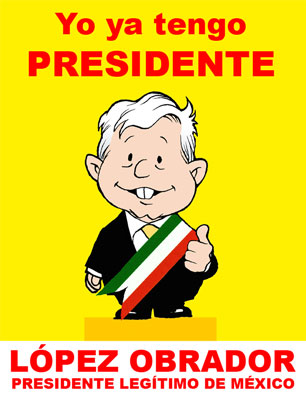EL FESTEJO DE LOS MUERTOS EN MEXICO...
| | |

| La Ofrenda |
Ofendas are an essential part of the Day of the Dead celebrations. The word ofrenda means offering in Spanish. They are also called altares or altars, but they are not for worshiping. Some people mistakenly think that Mexicans that set up altars for their defunct relatives are actually worshiping them. Nothing further from the truth. The vast majority of Mexicans are Christian Catholics, so they only worship God.
| The ofrendas are set up to remember and honor the memory of their ancestors. |
|
|
| Before setting an altar, they thoroughly clean their house. We must remember they are going to have very important "visitors". |
| The ofrenda is set on a table, covered with a fine tablecloth, preferably white. Then the papel picado, cut tissue paper, is set over the cloth. |
|
Several levels can be set on the ofrendas. Generally on the top level the images of the Saints and the Crucifix are set.
|
| For each deceased relative a candle is set. Their light is thought to guide them on their way back. The light of the candles, also called ceras -waxes- symbolize Jesus Christ Reborn and faith. |
| Flowers, specially Cempasuchitl , adorn the ofrenda. Flowers represent the fugacity of life. |
|
|
Salt and water are also essential; they are set to quench the thirst of the souls, tired from their long trip. Water also purifies and cleanses.
|
|
|
Incense, Copal, is burned and thought to elevate prayers to God.
| Pictures of the defunct are placed on the ofrenda, as well as some of their favorite cloths, perhaps a hat or a shawl. For the children, they set some small toys. |
|
|
| Food is specially prepared for the souls. Their preferred dishes are cooked for them and placed on the altar: mole, tamales, fruits, arroz rojo -red rice-, hot chocolate and dried fruit. Some times cigarettes or liquor if the dead relative enjoyed them when alive. And of course Pan de Muerto |
|
It is important to mention that they will not eat the food, they only enjoy the aroma.
|
| Sometimes a cross is made with petals of the cempasuchitl flower. Also with the petals, paths are set to guide the souls to the ofrenda. |
| Sugar skulls and clacas -skeletons are also included. |
|
|
| In many towns, there are contests of ofrendas. Judges go house by house and elect the three most beautiful altars. |
Ofrendas are works of art, ephemeral art that is!
All of the pictures in this page are stills taken from our live video Celebrating the Day of the Dead






















0 Comments:
Publicar un comentario
<< Home